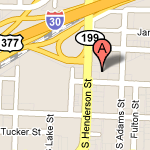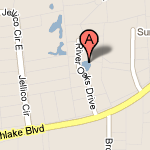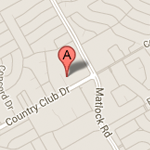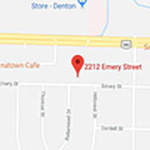
Blepharitis and Chalazion
Blepharitis is an inflammation of the eyelids. The most common causes are buildup of flaky skin at the base of the eyelashes, or irritation of the tiny oil glands (Meibomian glands) that are in a row just behind the eyelashes. When one of these oil glands is blocked, the secretions build up and form a bump called a chalazion (it resembles a stye).
Burning, irritation, tearing or redness of the eyelids and eyes are common symptoms of blepharitis. Blepharitis and chalazia often respond to medical treatment with warm compresses, cleaning of the eyelids and lashes with a mild soap, or treatment with antibiotics and steroids. Occasionally, an oral antibiotic is used in older children or adults to reduce inflammation.
Corrective Surgery
Chalazia and blepharitis rarely affect vision, but if a chalazion persists for several weeks or months without responding to treatment, we may need to perform a minor surgery to open the gland and clean out the built up secretions.
As with any surgery, there is a small risk of infection. We will provide you with antibiotic ointment for one week after surgery to prevent infection. Before recommending chalazion surgery, your pediatric ophthalmologist, Dr. Packwood, Hunt, or Norman, will have carefully considered whether there has been an adequate response to medical treatment.
What to Expect
Before Surgery
On the night before surgery, don’t give your child food or milk after midnight. Medicines may be taken with sips of water. Only apple juice and water may be taken up to three hours before the admission time. See the Hospital Pre-Op page.
If your child is acutely ill (has a fever, deep cough or vomiting) in the days before surgery, please call us at (817) 529-9949.
The time of day you’ve been given for the operation is tentative and may need to be changed on the day of surgery. In general, patients are taken in order by age, with the youngest going first.
During Surgery
The anesthesia doctor may order a preoperative oral sedative. A young child will be put to sleep within seconds by breathing gas from a mask held near his or her face. An intravenous (IV) line and a breathing tube are placed only after the child is asleep and the breathing tube is removed before he or she is fully awake. Children age 13 or older who are not unduly frightened may be given an IV line of sedatives beforehand. Depending on the special needs or medical condition of a patient, the anesthesiologist may slightly alter the routine.
Pediatric chalazion surgery is usually completed within 15-20 minutes, although this may vary slightly depending on the complexity of the case. After the surgery, Dr. Packwood, Norman, or Hunt will find you to discuss the results.
During Recovery
There is usually a small amount of bleeding with the surgery and your child may have some blood stained tears for a few hours after surgery. These can simply be wiped away with a washcloth or tissue.
There may be mild discomfort from the surgery, and mild nausea is common. The nurses will treat any discomfort with appropriate medication. We discharge most patients within one to two hours after surgery.
At Home
As your child is discharged, the nurse will provide you with eye drops or ointment to help healing and prevent infection in the first week after surgery. You can give your child Tylenol for any mild pain.
Younger children often play within hours after surgery, though some children may be tired, grouchy or nauseated for a day or two. Your child can resume all normal activities, including day care or school, the day after surgery.
On Follow-Up Visits
If there is no skin breakdown from the chalazion, we’ll simply call you to ensure healing is going well. If there is skin breakdown or any other concern, the doctor may schedule a short post-operative visit after surgery.




